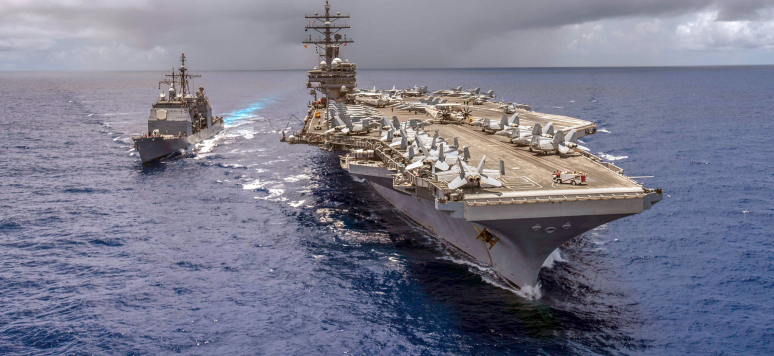Asie Visions - The Indo-Pacific Vision in Strategic Limbo: A Foreign Policy Case Study for the Trump Era Asie Visions, No. 102, November 2018

The Trump Administration’s Indo-Pacific security strategy is a case study in foreign policymaking under a non-unitary executive.
Having identified competition with China as a leading national security priority in its early months, disposed of the Obama Administration’s Rebalance to Asia, and begun the process of defining its ‘free and open Indo-Pacific’ approach, the administration has made little subsequent progress towards developing it into a concrete strategy. While some modest efforts have been made to develop policy at the working level, the President himself has pursued a much narrower China approach, focused almost exclusively on punitive trade measures and North Korea. Moreover, the basic principles that motivate Indo-Pacific concept are clearly at odds with the President’s own instincts. As a result, two largely independent streams of China policy have emerged and are highly unlikely to be rationalized in the next two years.
This current disjuncture does not, however, doom the Indo-Pacific security strategy to history’s dustbin. Whether or not the moniker persists, the basic contours of the approach are likely to be adopted by a new administration and are largely consistent with broader U.S. objectives in the region. Far beyond the White House, a consensus has emerged in Washington that the United States and China will be increasingly competitive, and that a holistic American strategy is necessary. Any future strategy is likely to rely on allies and partners, emphasize democracies, seek to secure the First Island Chain and maritime Asia, and have ample room for participation by European partners. There will, however, remain many hurdles to full and successful implementation, including perennial American over-optimism about regional states’ alignment decisions and ability to commit resources, as well as the profound distrust that is likely to enshroud U.S. strategic leadership after Trump. Nonetheless, American allies and partners may think of the Indo-Pacific approach as one whose time is still likely to come; they should seek to develop it themselves until the United States is capable of resuming some form of regional leadership.
